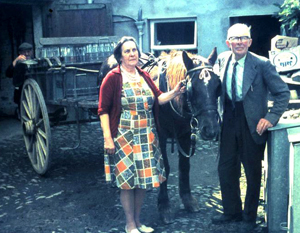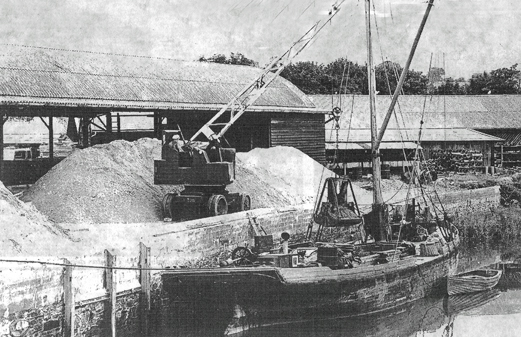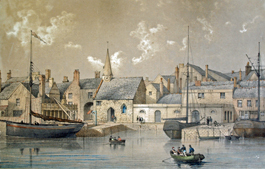
Mr and Mrs Chammings and their dairy horse and cart
Arthur and Gwen Chammings of Bradiford ran a dairy from Hume Farm on the road to Anchor Mill. This photo shows them in about 1972 when their horse may have been called ‘Dot’. On an earlier photograph in 1965 (see link below) the pony is reported as being called ‘Dolly’. The man in the background, behind the cart, is also thought to have been called Arthur and worked for Hume Farm.
Memories of the Chammings include them delivering milk by the jug in the 1950s with milk churns on their cart and then changing over to gold top and silver top bottles. They used 2 pint bottles and then used to foil seal the milk bottles by hand with a little gadget.
The 1965 photograph can be seen by clicking on the following link Chammings Dairy Cart in 1965. Many thanks to Michael Abbott for the photograph above.


